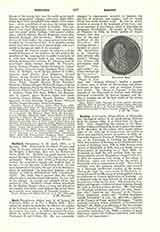

Redford, SEBASTIAN, b. April 27, 1701; d. January 2, 1763. Educated at St. Omer, Watten, and Liege, he became a Jesuit and lived as chaplain with the Wrights of Kelvedon, then with the Herberts of Powis (1733-48). Redford was much trusted by the second Marquess of Powis (d. 1745), but the third was unfriendly. When he died (1748), a Protestant succeeded, the chaplaincy lapsed, and Redford had, as he says, “to rue the ruin” of his former flock. He was next stationed at Croxteth, the seat of Lord Molineux, where he published “An important Inquiry; or the Nature of Church Reformation ‘fully considered” (1751). The book was a success, but the excise officers seized and destroyed 400 copies, the last half of the edition. A second and enlarged edition appeared in 1758. Redford’s extant letters (preserved by the English Jesuits) show a strong and attractive personality, and throw some light on the period when most priests were chaplains in Catholic families.
J. H. POLLEN

